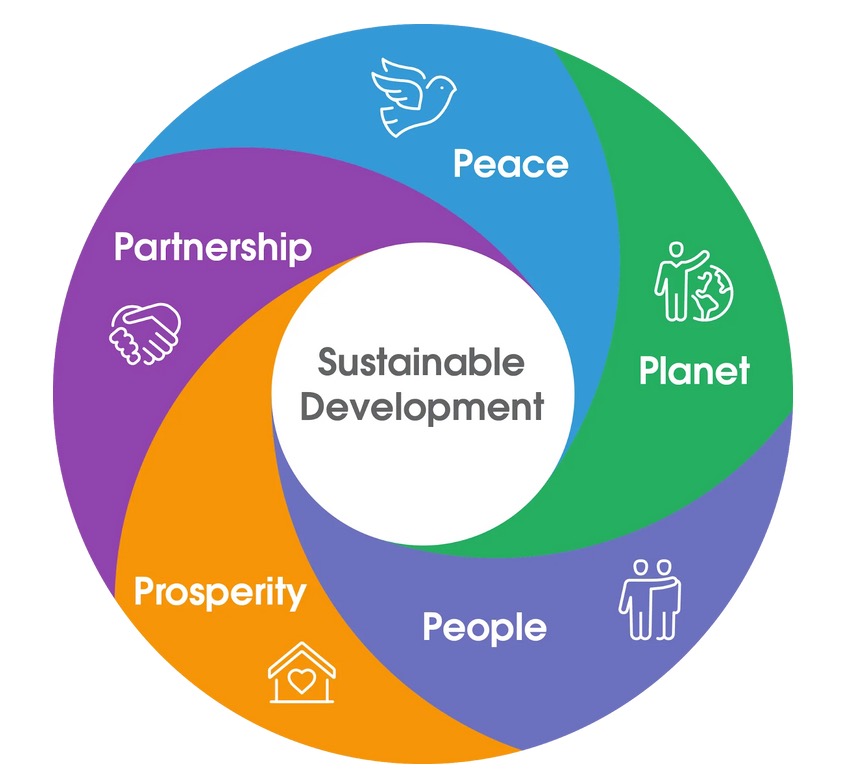Sustainability
DNZ TRAVEL SUSTAINABILITY COMMITMENT
At DNZ Travel we are committed to fostering responsible and sustainable travel and tourism in Aotearoa New Zealand. We recognise the principal of manaakitanga and our role as stewards of the environment, and of the natural and cultural heritage of the communities in which we operate.We are committed to operating in a way that protects and enhances social, environmental, cultural and economic sustainability for our business, customers, communities and the planet, now and for future generations.
PRINCIPLES
In delivering our sustainability commitment and priorities we operate by the following principles:1. Comply with all laws and regulations pertaining to our operations.
2. Measure, manage, and reduce our environmental impact across our business, including: Energy consumption, Emissions reduction, Water consumption, Waste.
3. We contribute to sustainability through all areas of our business. This includes our operations, our supply chain, and with our wider community including, staff, customers and the local communities we operate in.
4. We contribute meaningfully to deliver tangible sustainable outcomes.
5. We are transparent about our efforts and our impact through regular review and reporting of our sustainability performance.
6. We are committed to sustainability innovation for the long term.
ENGAGING ON SUSTAINABILITY
In delivering our sustainability commitment and priorities we adhere by the principle in Agenda 2030- "leave no one behind”. We:
1. Engage, train, and empower employees to take action towards our sustainability commitments.
2. Engage guests in our sustainability journey and enable them to be a part of the solution.
3. Partner with our suppliers to collectively solve sustainability challenges.
4. Be an environmentally responsible neighbour in our local communities.
OUR SUSTAINABILITY PRIORITIES
At DNZ Travel we have chosen to align to the UN Sustainable Development Goals (SDGs) and support the objectives of Agenda 2030. We have identified six priority SDGs to deliver on.1. Strengthen the means of implementation and revitalize the global partnership for sustainable development.
2. Promote sustained, inclusive and sustainable economic growth, full and productive employment and decent work for all.
3. Ensure healthy lives and promote well-being for all.
4. Make cities and human settlements inclusive, safe, resilient and sustainable.
5. Take urgent action to combat climate change and its impacts.
6. Ensure sustainable consumption and production patterns.

About Manaakitanga
Manaakitanga is a Māori word that has become familiar to many Pākehā New Zealanders in recent times. Most often it’s translated as ‘hospitality’. Often manaakitanga conjures images of pōwhiri (welcoming ceremonies) and a meal shared between tangata whenua (people of the land) and manuhiri (guests) on the marae.
That certainly is one example of manaakitanga, but it only scratches the surface of the word. A deeper examination of the meaning provides a rich insight into te ao Māori (the Māori world view).
Breaking the word manaakitanga into its constituent parts might be the fastest way to gain a deeper understanding of its meaning. First break it into manaaki and tanga. Manaaki speaks of support and care, while tanga changes a verb to a noun.
Broken down to the next level, we get mana and aki. Mana, which is commonly known, speaks of power, force and authority of a person, place or object, which in Māori culture is believed to have been passed down from the atua or ancestors. Aki means to encourage or urge on.
Together as manaaki, the words mean your hospitality is encouraging, growing the mana of others and urging the same from them.
This introduces the idea of reciprocity. When we invite people into our homes, we give them hospitality and uplift their mana, and in return, they respect our customs and homes and enhance our mana in return. Manaakitanga is about the balance between those in the relationship whether two individuals or two iwi.
Historically, manaakitanga was intertwined with every core value of Māori society, and the amount of manaakitanga given would depend on the type of relationship and the place at which the relationship was being nurtured. For example, the level shown at a tapu location would be greater than at a place that wasn’t tapu.
Manaakitanga was always important no matter what the circumstances might be, and if it wasn’t observed, great offence could be taken and utu (revenge) might be sought.If leaders of an iwi didn’t show the right level of manaakitanga to others, they would be removed from their position and replaced with another leader. The mana of the whole was impacted by even one person behaving inappropriately.
Manaakitanga is an old word, but it remains a beautiful way of approaching relationships, whether they be between friends, family, clients or business associates. Living by the principles of manaakitanga means stopping to ask "whose mana am I encouraging?” and "am I elevating others?” – whether that be through words or actions. In uplifting others and giving them respect and aroha, we also hold our own mana in balance.
Manaakitanga always adds value and never takes away. Whether you offer a cup of tea or a three-course meal, it’s not about the amount so much as the offering and intent behind it.

About the Agenda 2030
The former Secretary-General Ban Ki-Moon has mentioned that the five Ps are essential in discussing and explaining the 2030 Agenda for Sustainable Development. We can actually categorize the 17 goals into five Ps.
People
Goals one, two, three, four and five can be combined into the category for people. As we remember from the United Nations dictum, the 2030 agenda is to leave no one behind. The SDGs are goals that represent and emphasize the importance of the livelihood of all people. The first five goals of sustainable development goals are designed to provide an appropriate target for meeting the fundamental Ds of all people around the world. The first two goals addressed the most basic sustenance. Goals three and four assert the access to fundamental goals of health, well-being and education. The next goal is to focus on one of the key social issues of empowering girls and women around the world.
Planet
Goals 6, 12, 13,14 and 15 present the challenges that our planet is facing around the world. This is important in the planning upon which the SDGs were agreed within the international community because the global community can deeply appreciate the critical importance of saving our planet and how our future depended on transforming our approaches to responding to the climate crisis. Goal six ascribes management of water and sanitation for all to ensure access to clean and safe water for all people. As we know, the management of water is critical in saving the planet as all life forms require water in order to survive. In conjunction with goal six, goal 12 asserts appropriate and proportionate consumption and production for ensuring sustainable development. Goals 13, 14, 15 directly address the significant effort towards the protection of our planet. Goal 13 is presented as the precedent that all environmental protection policies and targets start from climate action. Goals 14 and 15 highlight that the protection of our ecosystem is crucial for our planet's survival while reminding us that we must work to achieve these goals systematically and simultaneously. The next categorization moves forward with issues relating to prosperity. It is a reminder that sustainable development goals are not intended to disregard the importance of economic development. In order for the world to live with peace and prosperity, economic development that can attain prosperity is the requisite condition for all people. The intended design objective of the SDGs understands and appreciate the critical importance of the sustainability side to economic development. In all developmental agendas or processes, attaining energy sources and energy utilization are indispensable for achieving successful outcomes. At the same time, the environmental complications and destruction that can arise from energy utilization must become an important priority for us to manage and resolve to reach sustainable solutions. Therefore, goal seven provides targets for the international community to be able to attenuate the negative impact from over-utilization and eventually achieve the appropriate and sustainable balance of energy utilization because we will not be able to save the planet without addressing the energy utilization issue.
Prosperity
Goal 8, 9, 10, 11 speaks to the issues involving fair and justice systems both in public and private communities and national entities. Again, these issues are directly related to goal five in that fairness and justice must be realized throughout the lines on gender, age, geographic regions, political and cultural entities involving every individual around the globe. These goals assert sustainable economic successes must be achieved in manners that promote and attain a fair justice system. These goals address that such achievement can be realized through smart and innovative approaches for a sound and reliable economic foundation. In these goals, the SDG highlights the importance of reducing inequalities for fair gross for everyone.
Peace and Partnerships
The last two goals, goals 16 and 17 incorporate the peace and partnership categorization of the SDGs. Peace has been an important aspect of the development of the 2030 agenda. Conflicts, terrorism and other forms of difficulties were threatening the peace around the world. In addition, weak institutions can become the targets of those who threaten peace around the world. Therefore, goal 16 shows how the international community must come together to promote and protect peace around the world, not with military actions but preferably with strong institutions of justice. Lastly, goal 17 represents the partnerships for the goals. As we have seen in goal eight of the MDGs, partnership constitutes an important factor in all the 17 goals. Although the SDGs were agreed upon by the member states within the United Nations, achieving the SDGs involve all entities in the international community. During this week, we talked about how each of the goals is represented in all five Ps. People, planet, prosperity, peace and partnership. We can remember that the five Ps represent, and embody the core priorities of the SDGs.



